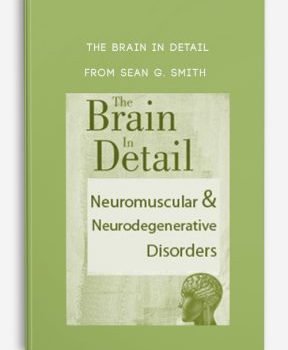 Antisocial, Borderline, Narcissistic and Histrionic from Daniel J. Fox
Antisocial, Borderline, Narcissistic and Histrionic from Daniel J. Fox
More information about Medical:
Medicine is the science and practice of establishing the diagnosis, prognosis, treatment, and prevention of disease.
Medicine encompasses a variety of health care practices evolved to maintain and restore health by the prevention and treatment of illness.
Contemporary medicine applies biomedical sciences, biomedical research, genetics, and medical technology to diagnose, treat, and prevent injury and disease,
typically through pharmaceuticals or surgery, but also through therapies as diverse as psychotherapy, external splints and traction, medical devices, biologics, and ionizing radiation, amongst others.
Medicine has been around for thousands of years, during most of which it was an art (an area of skill and knowledge) frequently having connections to the religious and
philosophical beliefs of local culture. For example, a medicine man would apply herbs and say prayers for healing, or an ancient philosopher and physician would apply bloodletting according to the theories of humorism.
In recent centuries, since the advent of modern science, most medicine has become a combination of art and science (both basic and applied, under the umbrella of medical science).
While stitching technique for sutures is an art learned through practice, the knowledge of what happens at the cellular and molecular level in the tissues being stitched arises through science.
Outline:
The Personality Mystique
- DSM-5® criteria
- Treatment errors and misdiagnoses
- Core and/or surface structure and the role of the clinical disorders
- Differential diagnoses
- Five central components to accurate diagnosis
- Insulate your clients against risk factors
Antisocial Spectrum
- Oppositional defiance to psychopath
- Attachment
- Manage and avoid in-session violence and threats
- Secondary gains, suicide attempts and threats
- Overcome blockades – manipulation, threats, power struggles and more
- Symptom presentation and risk analysis to self and other
- Interpersonal theory techniques for compliance
- Balance transference and countertransference
- Lessen destructive behaviors
- Cognitive-behavioral experiential techniques to lessen pathology
- Psychotropic medications
- Case studies and treatment exercises
Narcissistic Spectrum
- Narcissistic presentation and the environmental context
- Attachment and pathological narcissism
- Tackle the veneer of perfectionism
- Overcome blockades – power struggle, absent empathy, excessive criticism
- The narcissistic/borderline client
- Interpersonal strategies for empathy engagement
- CBT techniques to clarify behaviors, values and goals
- Tactics to avoid arguing
- Motivational Interviewing to overcome resistance
- Prevent sabotage
- Build a sense of true self
- Case studies and treatment exercises
Histrionic Spectrum
- Moody to excited to histrionic: the erratic client
- Attachment
- Coquettish behavior, avoidance drama, inauthenticity
- Dangers of the histrionic client
- Link between emotions and behavior
- Interpersonal strategies to encourage expression of true self
- Enhance sense of self and lessen the “spotlight”
- Motivational Interviewing techniques
- DBT techniques
- Interpersonal strategies to build positive relationships
- Strengthen self-initiative and independent action
- Psychotropic medications
- Case studies and treatment exercises
Borderline Spectrum
- Symptom presentation along the spectrum
- Attachment
- Feeling identification and behavioral control
- Manage self-harm and suicidality
- Rage-ful outbursts, self-mutilation, boundary violations
- Create stability and build therapeutic collaboration
- Develop true sense of self and lessen maladaptive need for attention
- Facilitate pattern recognition
- Lessen the impact of maladaptive patterns
- Underlying wishes and fears
- Build DBT core mindfulness skills
- DBT techniques to dissolve the distraction and focus on the “genuine relationship”
- Calm interpersonal upheavals with DBT
- DBT emotion regulation skills
- Psychopharmacology and applicability
- Case studies and treatment exercises
Description:
Watch national trainer, Dr. Daniel J. Fox, as he delivers an intensive workshop recording designed to provide you with the knowledge, skills, and abilities to accurately identify and treat your most difficult personality disordered clients. Better understand your clients with Antisocial, Narcissist, Histrionic and Borderline Personality Disorder client and make a breakthrough in clinical treatment.
- Manage the manipulative and possibly violent Antisocial Personality Disorder in session.
- Overcome the Narcissistic Personality Disorder trait of perfectionism and combat their need to overpower you as the therapist.
- Better understand your clients diagnosed with Histrionic Personality Disorder whose intense emotions and need for attention will test your patience and compassion.
- Help the Borderline Personality Disorder client deal with their explosive emotions, self-harm tendencies and cravings for chaos.
Case studies and video examples will be used to illustrate client symptom presentation, treatment, and management of each Cluster B client type. You will explore various modalities that are effective with antisocial, narcissistic, histrionic, and borderline personality disorders, such as Motivational Interviewing, Cognitive-Behavioral, Interpersonal, and Dialectical therapies. Each of these theories will be explored to provide you with solid and useable skills to include in your daily practice.
Stop being stuck and frustrated with your Cluster B Personality Disorder clients!













tristian –
This is Digital Download service, the course is available at Coursecui.com and Email download delivery.